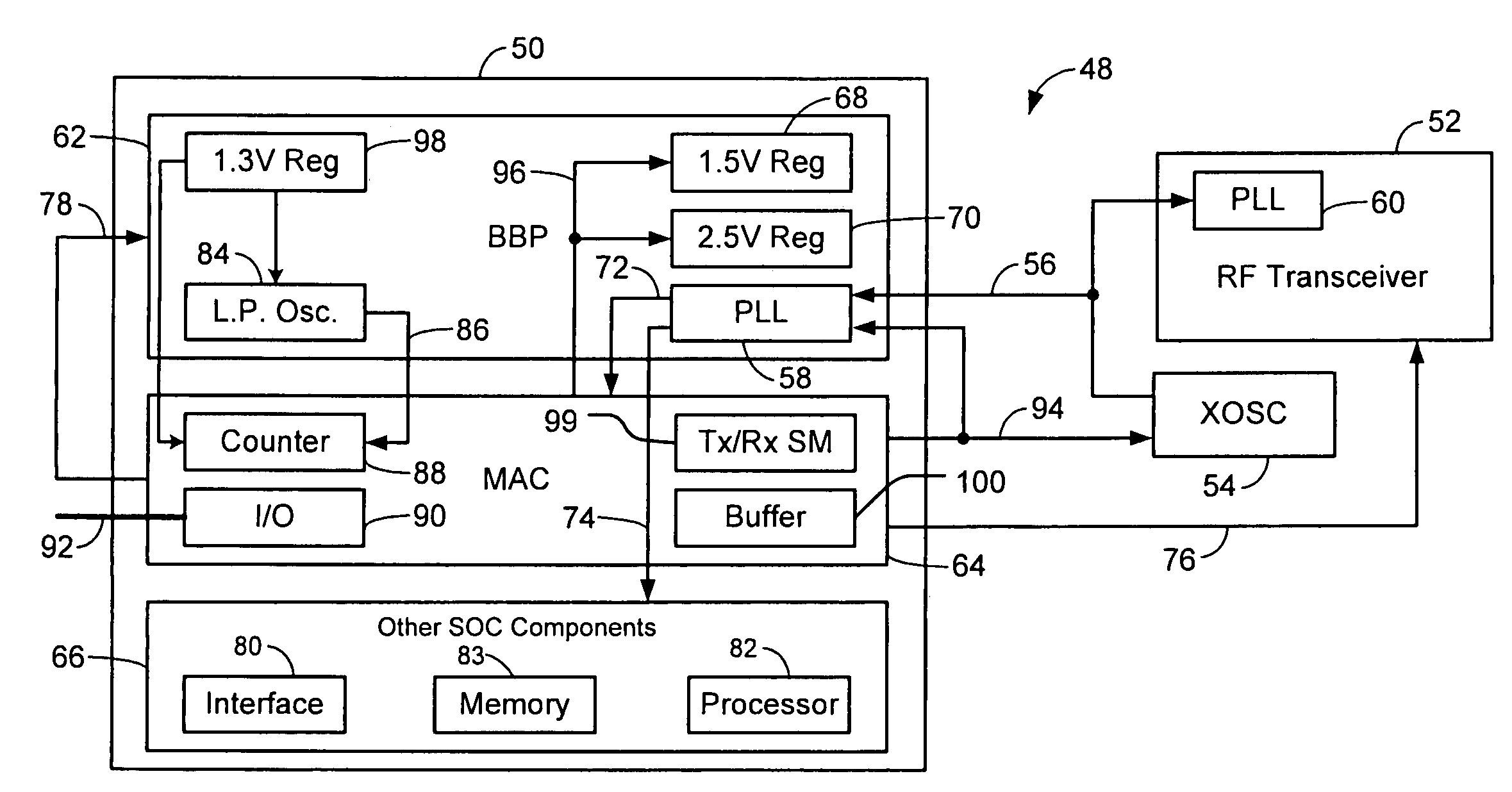Power savings apparatus and method for wireless network devices
a wireless network device and power saving technology, applied in the field of networks, can solve the problems of consuming power, consuming a significant amount of power, and remaining active, and achieve the effect of reducing current consumption
- Summary
- Abstract
- Description
- Claims
- Application Information
AI Technical Summary
Benefits of technology
Problems solved by technology
Method used
Image
Examples
Embodiment Construction
[0045]The following description of the preferred embodiment(s) is merely exemplary in nature and is in no way intended to limit the invention, its application, or uses. For purposes of clarity, the same reference numbers will be used in the drawings to identify similar elements. As used herein, the term device refers to an application specific integrated circuit (ASIC), an electronic circuit, a processor (shared, dedicated, or group) and memory that execute one or more software or firmware programs, a combinational logic circuit, or other suitable components that provide the described functionality.
[0046]Referring to FIG. 1, a first wireless network 28 is illustrated in an infrastructure mode as defined by IEEE 802.11 and other future wireless standards. The first wireless network 28 includes one or more mobile stations 30 and one or more access points (AP) 32. The mobile station 30 and the AP 32 transmit and receive wireless signals 34. The AP 32 is a node in a network 36. The netw...
PUM
 Login to View More
Login to View More Abstract
Description
Claims
Application Information
 Login to View More
Login to View More - R&D
- Intellectual Property
- Life Sciences
- Materials
- Tech Scout
- Unparalleled Data Quality
- Higher Quality Content
- 60% Fewer Hallucinations
Browse by: Latest US Patents, China's latest patents, Technical Efficacy Thesaurus, Application Domain, Technology Topic, Popular Technical Reports.
© 2025 PatSnap. All rights reserved.Legal|Privacy policy|Modern Slavery Act Transparency Statement|Sitemap|About US| Contact US: help@patsnap.com



